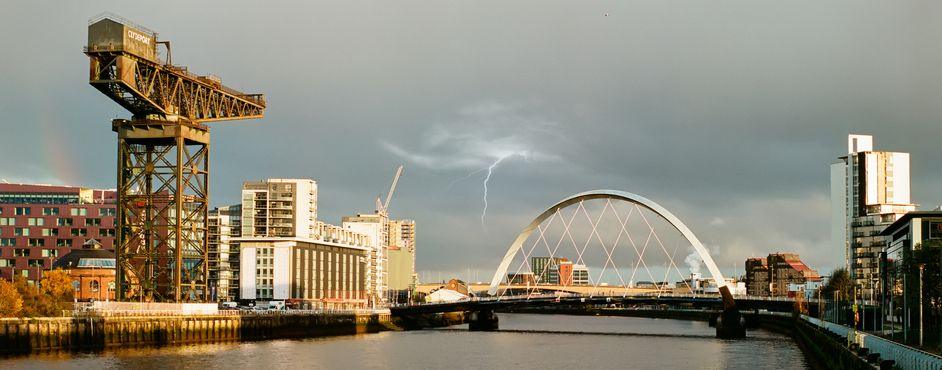What's the difference between summer and winter storms?

- Published
With summer in full swing and lots of fun things happening outdoors – like camping trips, park picnics and beach days – bad weather can sometimes get in the way.
This week will see some unseasonal weather, with strong winds and heavy rain as Storm Floris rolls in.
A storm like Floris would not be that unusual during the autumn or winter months but could have greater impacts during summer.
So what actually makes a summer storm different from a winter one?
- Published3 August
- Published21 October 2024
Are August storms in the UK rare?
Whether it's a sunny July or chilly December, storms usually start the same way – with something called low pressure. This is a type of weather system that brings clouds, rain, and wind. So storms can happen in any season.
Named storms in August are not that rare.
Last year, Storm Lilian struck the UK on 23 August, just before the bank holiday weekend, closing stages at the Leeds music festival and cancelling flights at Heathrow Airport.
Ben Rich from BBC Weather tells us what to expect from Storm Floris
Are summer storms worse?
Even though winds are usually stronger in winter, summer storms can sometimes cause more problems.
The Met Office - who monitor the UK's weather - may decide to issue a weather warning based on the potential impact of a storm rather than the strength of the storm itself.
Speaking to Newsround, Ben Rich from BBC Weather explained that "in the summer, when more people are travelling and more events are going on outdoors, that will be taken into account when deciding whether to issue a warning – and whether that warning will be yellow, amber or red.
"A storm that would cause only a little disruption in winter could cause much bigger problems in the summer months."
- Published15 November 2023
Why winds are a bigger problem when trees have leaves
Branches are more likely to break off, and trees are more likely to fall down in summer storms than in winter ones.
That's because in summer, trees are full of big, leafy branches.
"The leaves on the tree offer more resistance to the wind, and so – a bit like a sail on a boat – the wind will blow against the tree and may cause damage," says Ben from BBC Weather, explaining how a tree will be pushed around more when it's in full leaf.
In colder months, trees have fewer leaves, and wind can pass through bare branches more easily.

How is Storm Floris different to thunderstorms we see in summer?
Thunderstorms and sudden heavy rain are common in summer.
Warmer air holds more moisture, and as that warm air rises, carrying lots of water vapour with it, it cools down quickly – and that's when all that moisture turns into clouds and rain.
If it rises fast enough, it can build big thunderclouds, called cumulonimbus clouds.
These clouds can cause heavy downpours, lightning, thunder, and even hail – sometimes all in a very short amount of time.
The Met Office says that this kind of storm is called convective weather, and it happens more often in the summer months because the ground gets hotter.

But unlike Storm Floris, thunderstorms are much smaller and tend to happen over much smaller areas and aren't big enough to be named.
"While warm weather causes thunderstorms in smaller, localised areas, Storm Floris is a much larger storm," says Ben from BBC Weather.
"It is formed by an area of low pressure which is developing over the Atlantic because of a powerful jet stream – the flow of air high in the atmosphere – which is providing the energy for this spell of windy weather.
"Some thunder and lightning is possible – but heavy rain and strong winds will be the main impacts."
